September 2, 2024 · 10 min read
Project Portfolio Management (PPM) for Smarter Business Growth
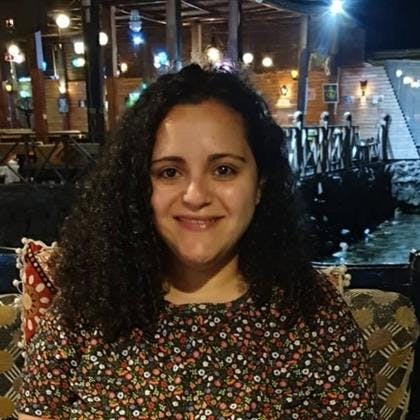
Shaimaa Badawi

Effective project portfolio management (PPM) is the key to driving smarter business growth. By strategically selecting, prioritizing, and managing projects, PPM ensures that every initiative aligns with organizational goals and maximizes return on investment. In this article, you'll discover why PPM is essential for maintaining focus, optimizing resources, and enhancing decision-making, ultimately empowering businesses to achieve sustainable success.
What is portfolio management in project management?
Portfolio management in project management is the systematic process of selecting, prioritizing, and managing a group of projects within an organization to ensure they align with the company’s strategic goals and deliver maximum value. The objective is to balance the implementation of change initiatives with ongoing operations, while optimizing resource use and return on investment (ROI).
Projects are evaluated based on their alignment with business objectives, potential impact, and interdependencies with other projects. Once projects are selected, the portfolio management team continuously monitors their performance to ensure they contribute to overall business success. Poorly performing projects can be adjusted or terminated to avoid negative effects on the broader portfolio.
What is the main objective of project portfolio management?
The main objectives of project portfolio management include the following:
- Aligning projects with strategic goals: Ensuring all projects and programs support the organization's overall business objectives.
- Prioritizing projects: Evaluating and ranking projects based on their potential benefits, challenges, and alignment with enterprise goals, ensuring the most important projects are prioritized.
- Optimizing resource allocation: Allocating resources effectively across the portfolio to ensure that the right projects are well-supported and resources are used efficiently.
- Monitoring and managing risks: Continuously tracking the progress of projects, identifying risks, and making necessary adjustments to keep the portfolio balanced and aligned with shifting priorities.
- Maximizing return on investment (ROI): Focusing on projects that provide the greatest value to the business, optimizing the portfolio to maximize returns.
- Creating a project pipeline: Developing a pipeline of projects and programs that contribute to the organization's success and ensuring smooth transitions between project phases.
- Communicating with leadership: Providing executives with clear, data-driven insights into project performance, expected ROI, and alignment with business goals to support informed decision-making.
Why is project portfolio management important?
Project portfolio management is crucial because it bridges the gap between an organization’s strategic objectives and its day-to-day project execution. Without PPM, businesses risk misallocating resources, pursuing low-value projects, and failing to meet long-term goals. Here’s why PPM is so important:
- Ensures strategic focus: PPM keeps an organization focused on projects that align with its strategic objectives. This ensures that resources are dedicated to high-impact initiatives rather than being spread thin across less valuable efforts.
- Prevents resource burnout: With PPM, organizations can balance their project workload with available resources. This prevents overburdening teams and reduces the likelihood of burnout, which is common when resources are stretched across too many projects without clear prioritization.
- Promotes data-driven decisions: PPM provides real-time visibility into project performance, resource capacity, and risks, allowing businesses to make informed, data-driven decisions. This ensures that project investments are aligned with business goals and that underperforming projects can be adjusted or terminated.
- Improves governance and oversight: PPM introduces standardized processes and governance structures, ensuring consistency in how projects are managed. This allows for better oversight, improving the chances that projects are delivered on time and within scope while also reducing risks.
- Maximizes ROI: PPM helps organizations optimize their project portfolio to maximize return on investment. By focusing on the right projects and constantly re-evaluating the portfolio, businesses can ensure that they are investing in initiatives that offer the highest value.
What are the benefits of project portfolio management?
Project portfolio management offers several key benefits to organizations by helping them manage multiple projects in a more structured and strategic manner:
- Alignment with business strategy: PPM ensures that projects align with an organization's overall goals. By evaluating projects based on their strategic value, businesses can prioritize those that contribute most to long-term objectives, ensuring that every project supports the company's mission.
- Optimized resource allocation: With PPM, organizations can efficiently allocate resources across projects, reducing the risk of overcommitting to low-priority projects. This helps prevent resource burnout, improves productivity, and ensures that high-value projects receive the necessary support.
- Improved decision-making: PPM introduces a structured, data-driven approach to project selection and prioritization. It uses qualitative and quantitative tools, such as ranking models and scoring methods, to eliminate bias, helping businesses focus on the projects that deliver the most value.
- Increased project success rates: By focusing on the right projects and optimizing resources, PPM reduces project failure rates. It fosters better oversight, enabling organizations to track project performance and make adjustments as needed, resulting in higher success rates and better ROI.
- Enhanced transparency and governance: PPM provides a centralized view of all ongoing and upcoming projects, offering greater visibility into project progress, resource use, and potential risks. This transparency allows for better governance and oversight, ensuring that projects stay on track and aligned with business priorities.
- Risk management: PPM helps organizations identify and mitigate risks across the entire project portfolio. By monitoring risks and creating contingency plans, businesses can avoid potential setbacks and improve overall project outcomes.
What is the difference between PMO and PPM?
The difference between PMO (project management office) and PPM (project portfolio management) lies primarily in their scope, function, and organizational role. Here's a breakdown of the key distinctions:
1. Scope and focus
- PMO: A PMO operates at a more tactical level. It manages and standardizes project execution within a department or across the organization. The PMO sets the methodology, tools, and standards for how projects should be run, ensuring consistency and efficiency in individual project execution.
- PPM: It takes a higher, strategic view and focuses on the entire portfolio of projects within the organization, determining which projects should be undertaken based on their alignment with business goals. PPM ensures that projects are selected, prioritized, and resourced to maximize overall business value, rather than just ensuring the success of individual projects.
2. Decision-making level
- PMO: PMOs work closely with project managers and teams to oversee day-to-day project activities, such as scheduling, budgeting, and risk management. Their decisions are focused on how projects are managed within predefined frameworks.
- PPM: PPM operates at the executive level, involving key decision-makers like the CFO or COO. It oversees the selection, prioritization, and alignment of all projects in the portfolio, ensuring they meet long-term business objectives. PPM evaluates whether to greenlight, adjust, or terminate projects based on performance and business value.
3. Key responsibilities
- PMO: PMO ensures that projects follow consistent processes and are delivered on time, within scope, and on budget. PMOs handle project governance, provide tools, training, and resources for project teams, and report on project performance.
- PPM: PPM focuses on optimizing resources, ensuring that the right projects are pursued, and balancing the project portfolio to avoid conflicts. PPM monitors the overall health of the portfolio, adjusts priorities based on business goals, and identifies interdependencies among projects to minimize risk and maximize value.
4. Strategic vs. tactical approach
- PMO: It takes a tactical approach, managing the execution of specific projects and ensuring they meet defined criteria. The focus is on the how of project delivery, including managing timelines, resources, and risks.
- PPM: It takes a strategic approach, looking at the bigger picture to ensure that projects contribute to the organization’s overall mission. It helps businesses choose the right projects and make sure they align with the company’s goals.
5. Time horizon
- PMO: The PMO is concerned with the immediate execution and completion of projects, ensuring they meet short-term objectives.
- PPM: PPM has a long-term outlook, focusing on how projects fit into the organization’s overall business strategy over time, and how they impact future growth and success.
6. Interdependencies and resource allocation
- PMO: The PMO Works to ensure individual projects are successful, but doesn’t typically manage how those projects relate to one another in terms of resources or timelines.
- PPM: The PPM evaluates the interdependencies between projects and optimizes resource allocation across the portfolio, making sure no projects are overcommitted and that the organization is using its resources efficiently.
How to create a project portfolio
Creating a project portfolio is essential for aligning an organization’s projects with its strategic goals while optimizing resources and maximizing business value. Here's a step-by-step approach to creating a successful project portfolio:
1. Define strategic objectives
Start by identifying your organization’s strategic goals. This will help determine which projects align with the company’s vision, ensuring that the portfolio supports long-term objectives. Defining clear criteria for success is essential for evaluating and selecting projects that deliver maximum value.
2. Identify and evaluate projects
Collect data on potential projects, including objectives, resources, and expected outcomes. Evaluate each project based on factors such as strategic alignment, return on investment (ROI), risk levels, and resource requirements. This assessment helps determine which projects are viable for inclusion in the portfolio.
3. Categorize projects
Not all projects serve the same purpose. Categorize projects based on their impact on business operations, growth opportunities, innovation, or essential business functions. This ensures a balanced portfolio, allowing you to allocate resources efficiently.
4. Prioritize projects
Once projects are categorized, prioritize them according to their importance and feasibility. Use tools such as decision matrices or scoring models to rank projects. Consider factors like business value, urgency, available resources, and interdependencies among projects when prioritizing.
5. Allocate resources
After prioritization, allocate budget, personnel, and other resources to high-priority projects. Ensure that resource allocation is optimized so that key projects receive the necessary support, while avoiding over-allocation to less critical projects.
6. Monitor and track performance
Regularly monitor the performance and progress of each project within the portfolio. Set up metrics and reporting systems to ensure that projects are on track, allowing for timely decision-making. Continual monitoring helps identify risks and make necessary adjustments.
7. Review and optimize
Periodic reviews are crucial for ensuring the portfolio remains aligned with evolving business goals. Re-evaluate projects, adjust priorities, reallocate resources, or terminate underperforming projects as necessary. The goal is to maintain a dynamic portfolio that adapts to changing business conditions and continues to deliver value.
How adam.ai enhances project portfolio management efficiency
To enhance PPM, an intuitive meeting management platform like adam.ai can streamline communication, decision-making, and project alignment across the entire portfolio. Here’s how adam.ai can empower your PPM efforts:
- Agenda and content management: Easily organize meetings across multiple projects by centralizing agendas, documents, and project updates. This ensures that decision-makers have all relevant information to assess project progress and strategic alignment.

- Action tracking and accountability: With adam.ai’s action tracking tools, PPM teams can assign tasks, monitor project deliverables, and track decisions across the portfolio. This promotes accountability and ensures that all project milestones are completed on time.

- Multi-project space organization: Manage multiple projects seamlessly with dedicated spaces for each initiative. This allows PPM teams to keep projects organized, monitor performance, and track resources effectively.
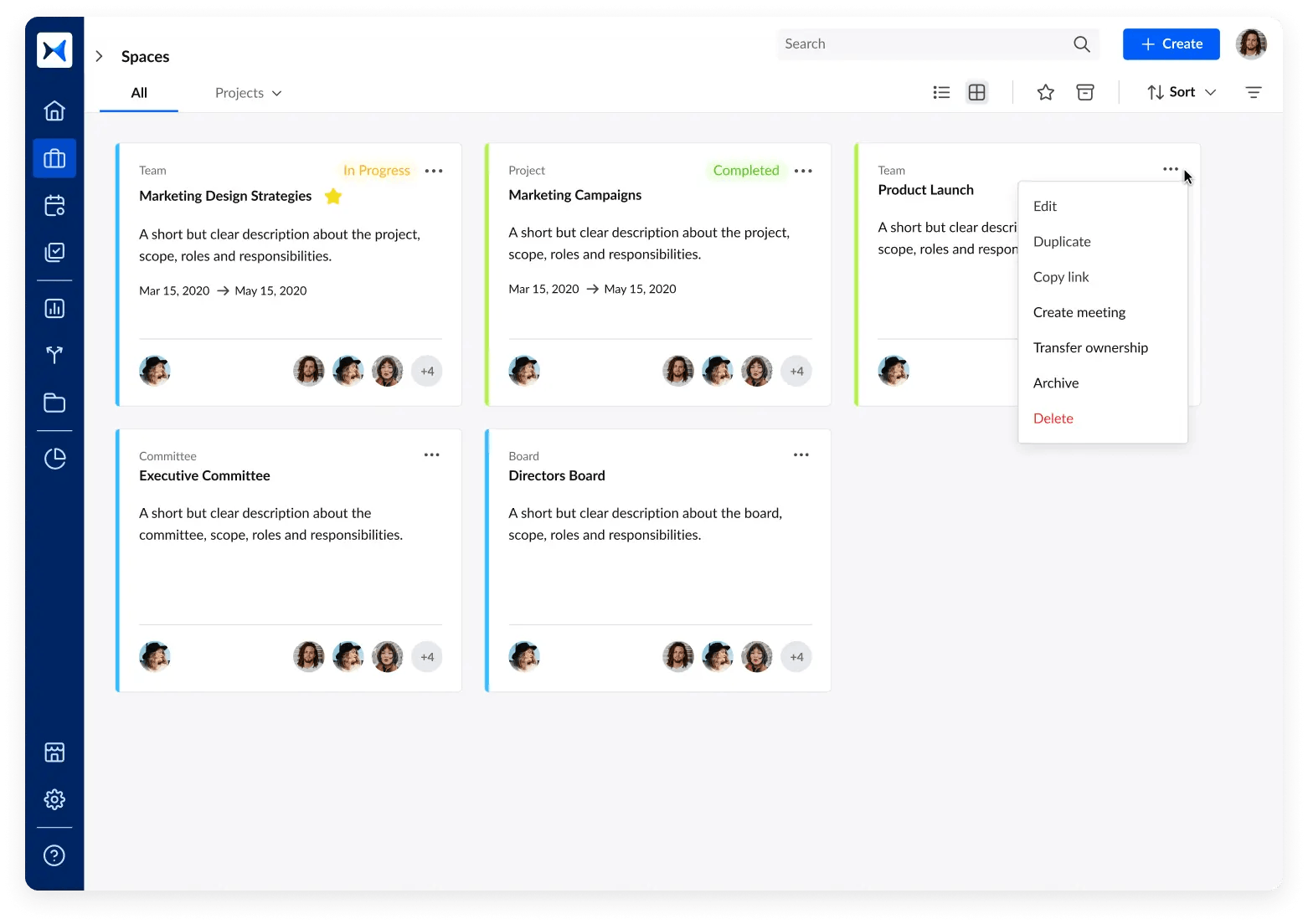
- Automated meeting minutes: Automatically capture meeting minutes, discussions, and follow-up actions. This feature ensures that project decisions and updates are well-documented, facilitating smoother communication between stakeholders and improving governance across the portfolio.
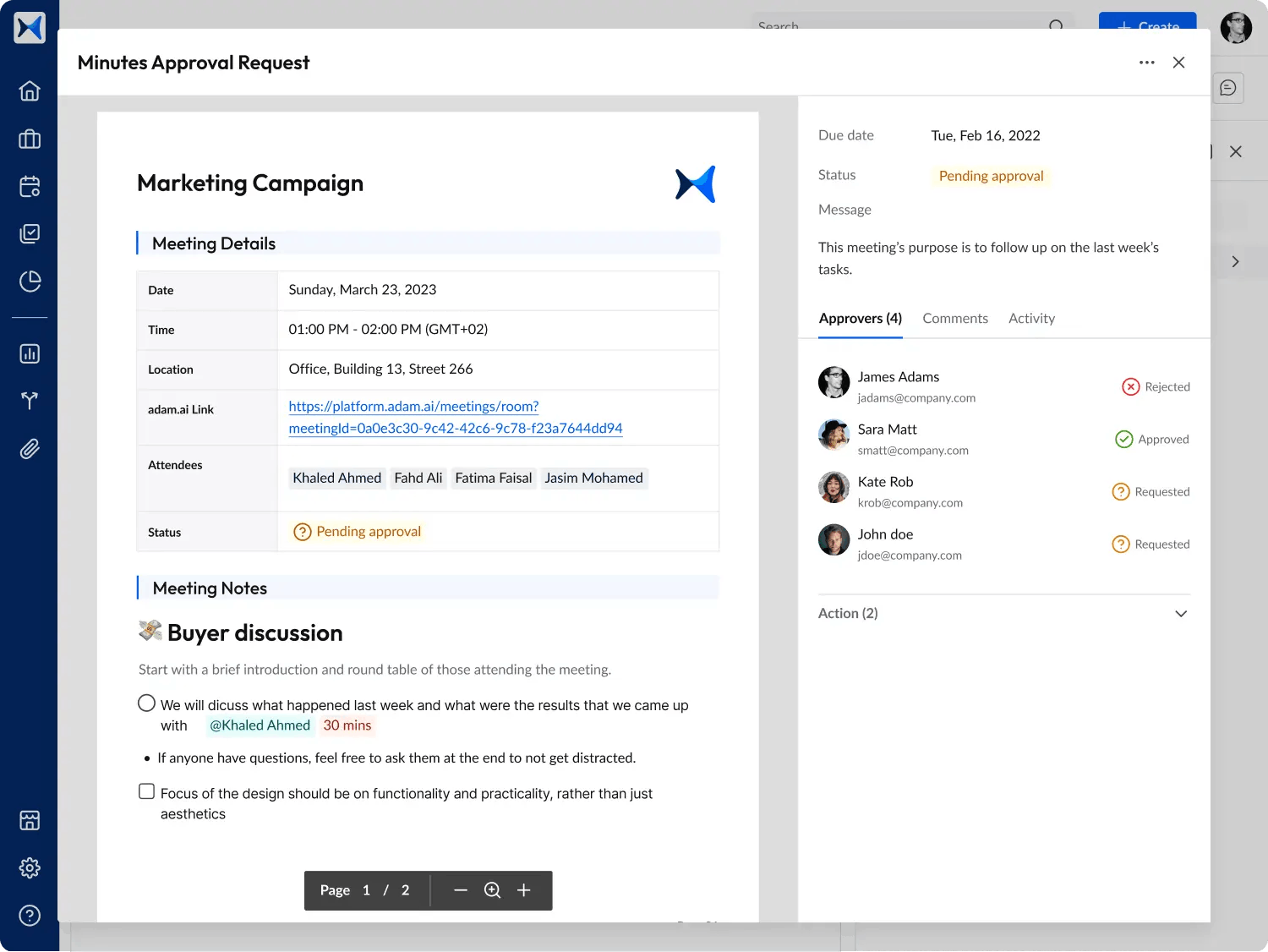
- Voting and decision management: Simplify decision-making within the PPM framework by utilizing built-in polling and voting features. This ensures transparency in critical project approvals and resource allocation decisions.
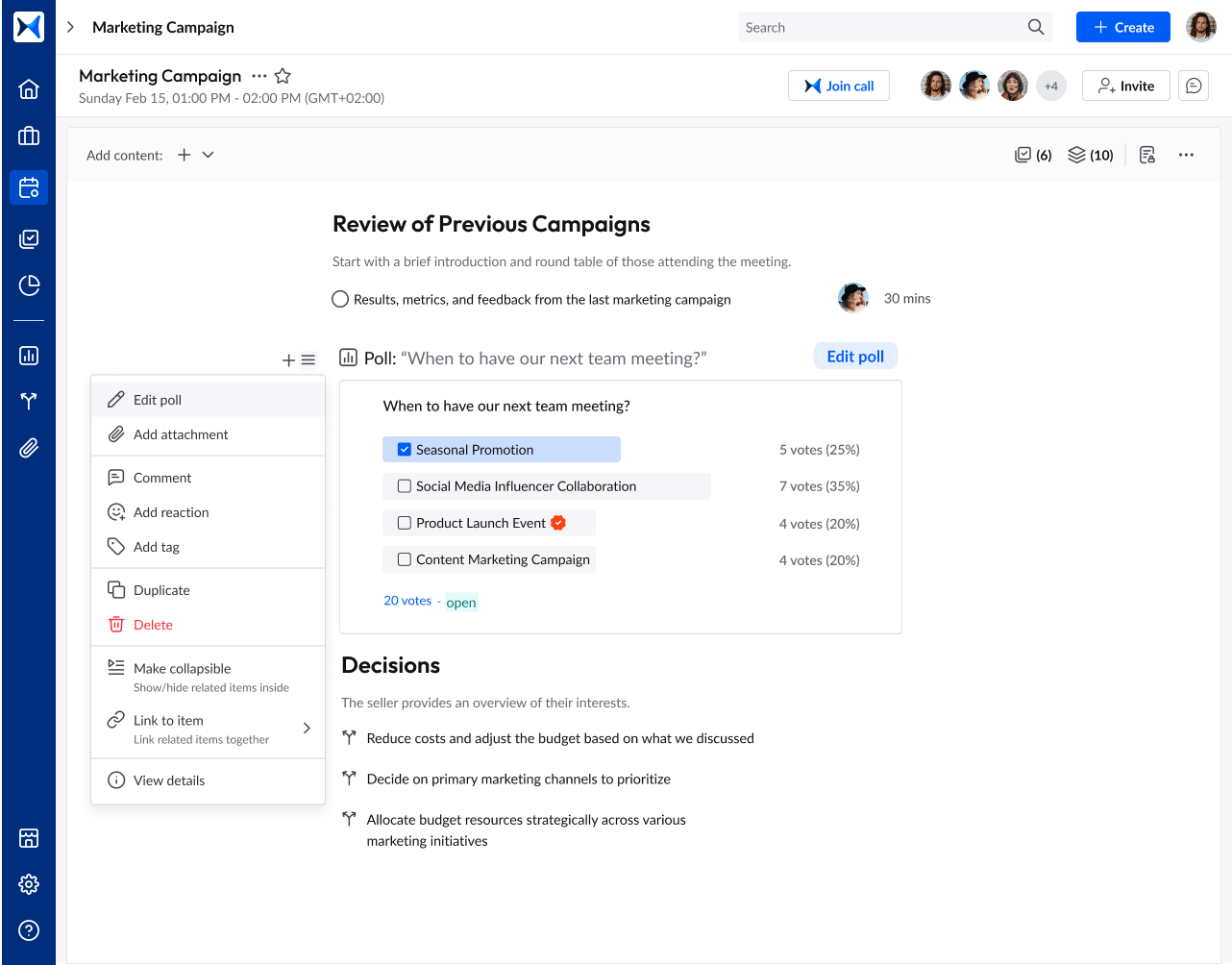
- Data-driven insights: Utilize adam.ai’s analytics dashboard to track project performance, resource utilization, and meeting participation. These insights enable PPM teams to make informed decisions, optimize the portfolio, and prioritize high-value projects.
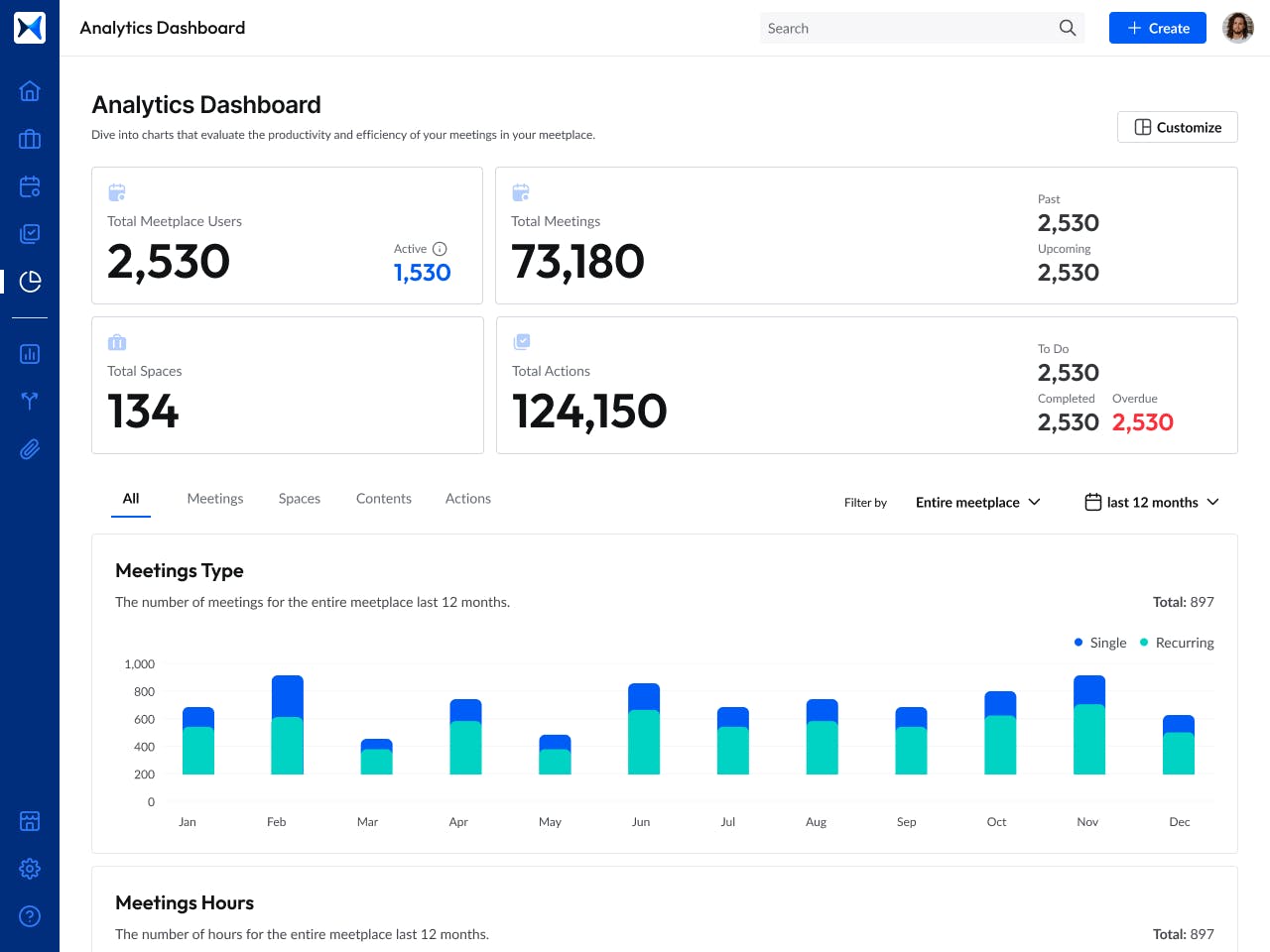
Transform how you conduct critical meetings—From meticulous preparation to effective execution and insightful follow-up, adam.ai integrates comprehensive analytics, full customization, and intuitive interfaces with powerful meeting management tools.
Easy onboarding. Enterprise-grade security. 24/7 dedicated support.
The bottom line
Project portfolio management (PPM) plays a crucial role in ensuring that businesses achieve their strategic objectives while optimizing resources and improving project outcomes. To take PPM to the next level, modern solutions offer enhanced tools for project tracking, accountability, and governance, helping businesses stay ahead in an increasingly competitive landscape.
And while there may be multiple solutions available, here is why adam.ai is the meeting management software platform you can trust:
- adam.ai is one of Atlassian Ventures' portfolio companies.
- In the meeting management software category on G2, adam.ai has been ranked a leader and a high performer for successive quarters in the past years.
- adam.ai has been included in the Forrester Report in the AI-enabled meeting technology landscape.
- adam.ai is trusted and used by powerful teams and organizations worldwide for all types of critical meetings, like board, committee, project management, and business development meetings.
- And most importantly, adam.ai integrates with your existing workflow, is SOC2 compliant, provides dedicated support and success, and has a free trial option.
Subscribe to adam.ai blog
Stay ahead with the latest insights—get our newest blog posts, tips, and updates sent straight to your inbox.